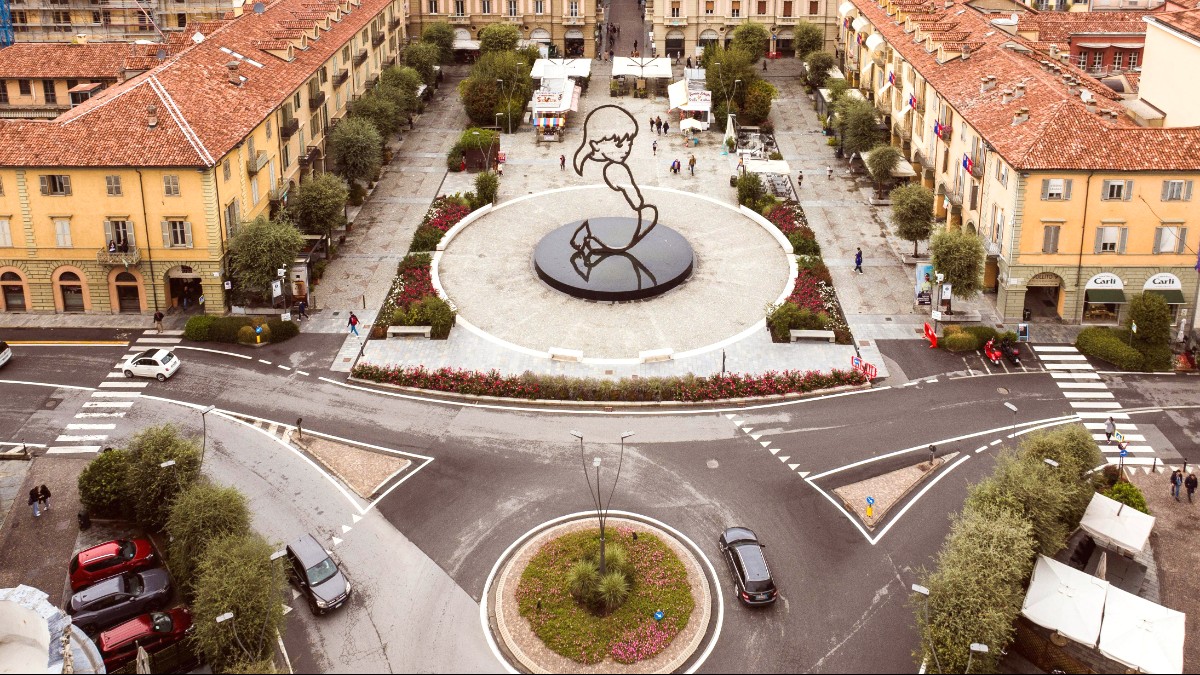
Liguria Piedmont And Valle Daosta, Italy
Piedmont's cuisine, influenced by its Savoyard kingdom history, leans towards rich, butter-based sauces, slow-cooked meats, yet retains an Italian character. Alba embodies this, defined by vineyards, hazelnut groves, and truffle-rich forests.
The region is the birthplace of the Slow Food movement, emphasizing sustainability, quality, and the preservation of traditional foodways.
The white truffle (Tuber magnatum pico) is king from October to December. Its intense, earthy, garlicky aroma transforms simple dishes. Black truffles are also used but are less prized.
Piedmont's 'Nocciola del Piemonte I.G.P.' hazelnuts are superior. Diverse artisanal cheeses include soft, creamy Robiola, semi-hard Toma, the crumbly Bra, and the intense Castelmagno.
Fine quality veal ('Vitello Fassone') from local Piedmontese cattle is tender. Handmade egg pasta is a cornerstone: 'Tajarin' (thin noodles) and 'Agnolotti del plin' (tiny, pinched ravioli).
Incredibly thin, hand-made egg noodles, often served simply with butter and a generous shaving of fresh white truffle. This dish is the ultimate expression of Alba's truffle culture.
Find it in almost any restaurant in Alba during the white truffle season (October-December); expect a premium price for the truffle.
These small, pinched ravioli are a Piedmontese specialty, often filled with roasted meats. They are typically served simply with butter and sage, or in a clear meat broth.
Widely available in traditional trattorias and osterias.
A classic antipasto featuring thinly sliced cold veal, covered in a creamy, savory sauce made from tuna, capers, and anchovies. It sounds unusual but is surprisingly delicious and refreshing.
Served in most traditional Piedmontese restaurants.
Panna Cotta (sweetened cream dessert), Bonèt (similar to crème caramel with amaretti biscuits), and Torta di Nocciole (delicious hazelnut cake) are must-tries.
Gianduiotto is Turin's iconic boat-shaped chocolate. For quick bites, local bakeries offer focaccia or 'pizza al taglio'.
This three-Michelin-starred restaurant, led by Chef Enrico Crippa, is world-renowned for its innovative and refined modern Piedmontese cuisine.
Located in the beautiful Fontanafredda wine estate in Serralunga d'Alba, this Michelin-starred restaurant offers traditional Piedmontese dishes.
The Langhe is rich with excellent trattorias and osterias that offer superb quality at reasonable prices, focusing on traditional recipes.
Sprawls through the streets of Alba's historic center, offering local produce, artisanal cheeses, cured meats, bread, and other regional specialties. It is a fantastic place to observe local life and sample various items.
A smaller, daily market ('Mercato delle Langhe') focuses mainly on fresh produce.
During the International Alba White Truffle Fair (October-December), a specialized, certified truffle market operates. Visitors can buy fresh white truffles directly from certified vendors.
The market has strict quality controls and offers sensory analysis to appreciate the truffle's aroma.
Many Italian dishes are vegetarian-friendly (pasta, risotto, vegetables, cheeses). Strictly vegan options require more effort. Specify 'senza carne' or 'senza latticini'.
Awareness of gluten-free ('senza glutine') needs is growing. Many restaurants can accommodate, especially for naturally gluten-free dishes like risotto or polenta. Inform staff clearly ('sono allergico/an a...').
Alba's dining scene is predominantly Italian/Piedmontese. For diverse international culinary experiences, larger cities like Turin offer more choices.
Use translation apps or carry a small card with dietary restrictions written in Italian. Research restaurants in advance or ask your accommodation for recommendations.
During truffle season, many restaurants offer special menus where fresh white truffle is shaved generously over almost every course. This is a luxurious and truly unique experience.
From antipasti to primi and even secondi, the truffle elevates the dining experience.
Some larger wineries and agriturismi offer exclusive dining experiences within their historic wine cellars.
This experience combines exquisite food with a deep dive into their wine collection.
Engaging with Alba's food and dining scene goes beyond sustenance; it is a journey into the heart of Piedmontese culture and tradition.
Many culinary experiences offer direct interaction with local producers and chefs.
Alba's cuisine is highly seasonal. Truffles are available from late September to early December. Wild game is prevalent in autumn and winter.
The region's wines are integral to its cuisine. Barolo and Barbaresco are powerful reds. Barbera and Dolcetto are approachable daily reds. Moscato d'Asti is a sweet, sparkling white.
Bread is almost always served and usually comes with no charge. It is for soaking up sauces, not for eating with oil and vinegar as an appetizer.
During the International Alba White Truffle Fair (October-December), white truffle prices are at their peak. Many restaurants offer special menus.
The price of truffle is often added separately to the dish cost, usually per gram.
At the certified Truffle Market during the fair, truffles come with a guarantee of authenticity and quality. Sensory analysis sessions are available.
This market is the safest place to purchase fresh truffles.
Offer traditional recipes, local ingredients, and a warm, inviting atmosphere. These provide an authentic and value-driven dining experience.
Great for quick, affordable bites like fresh focaccia, pizza slices, prepared foods, and sandwiches. Perfect for a casual lunch or picnic.
Alba's dining scene focuses heavily on Italian and Piedmontese cuisine. Diverse international culinary options are more common in larger cities like Turin.
Alba’s culinary scene is deeply rooted in local tradition. Seek out seasonal ingredients and local wine pairings for the best experience. Do not hesitate to ask locals for their favorite places to eat or for hidden gems.